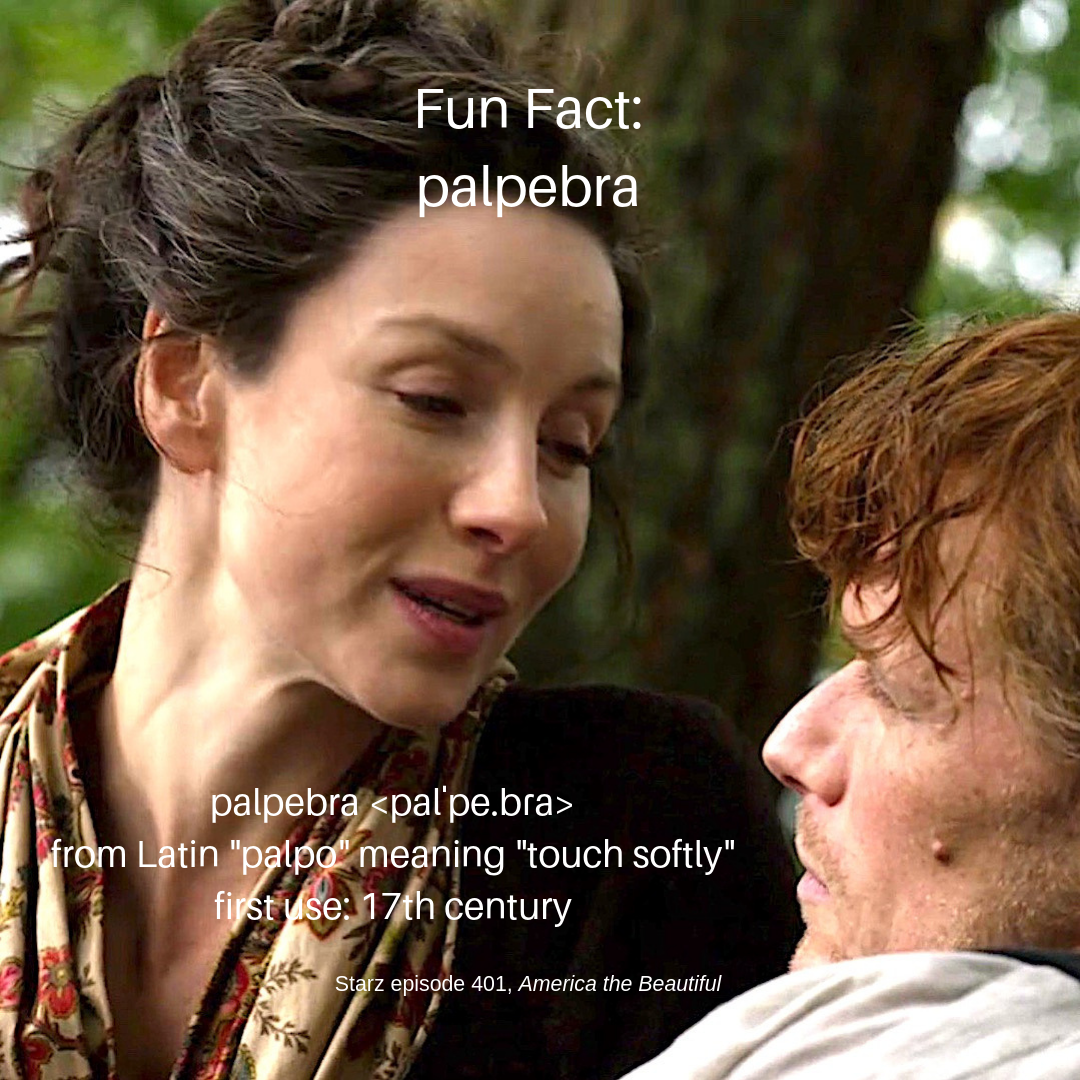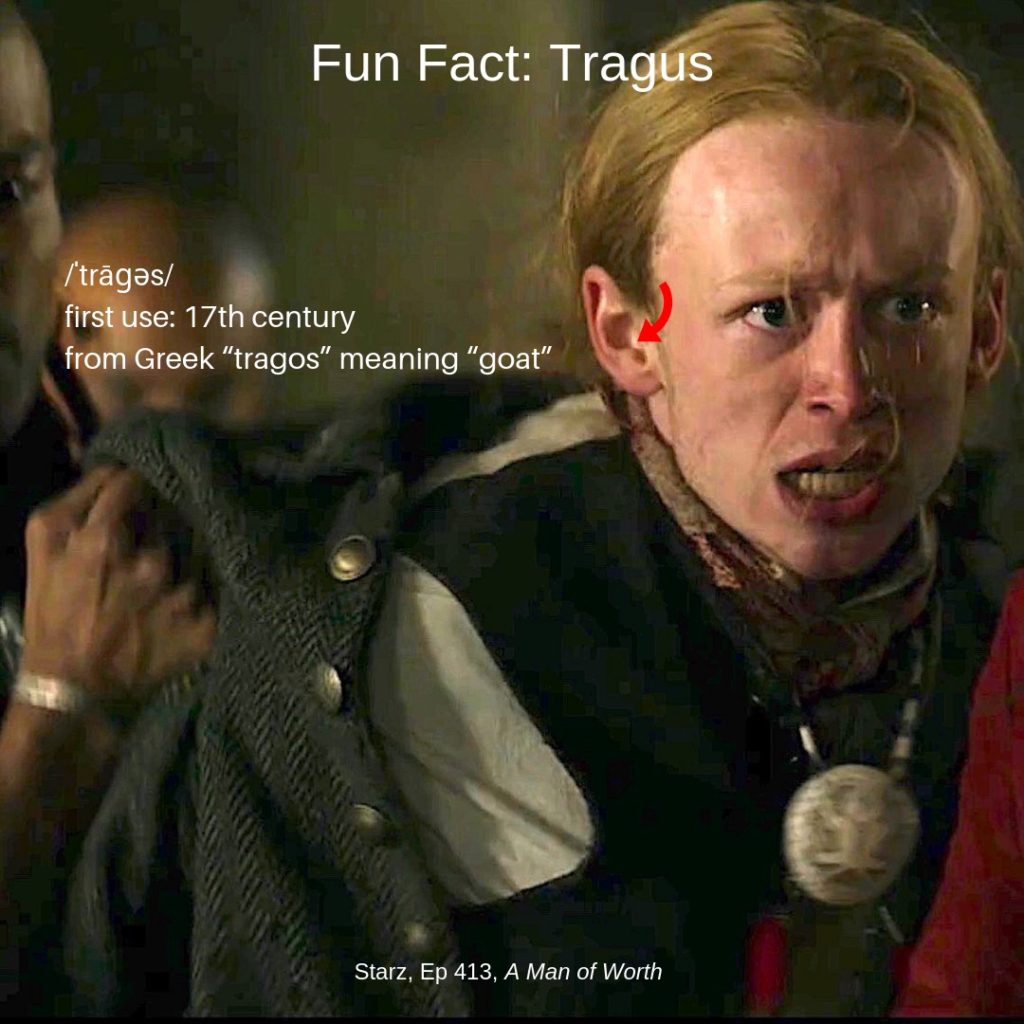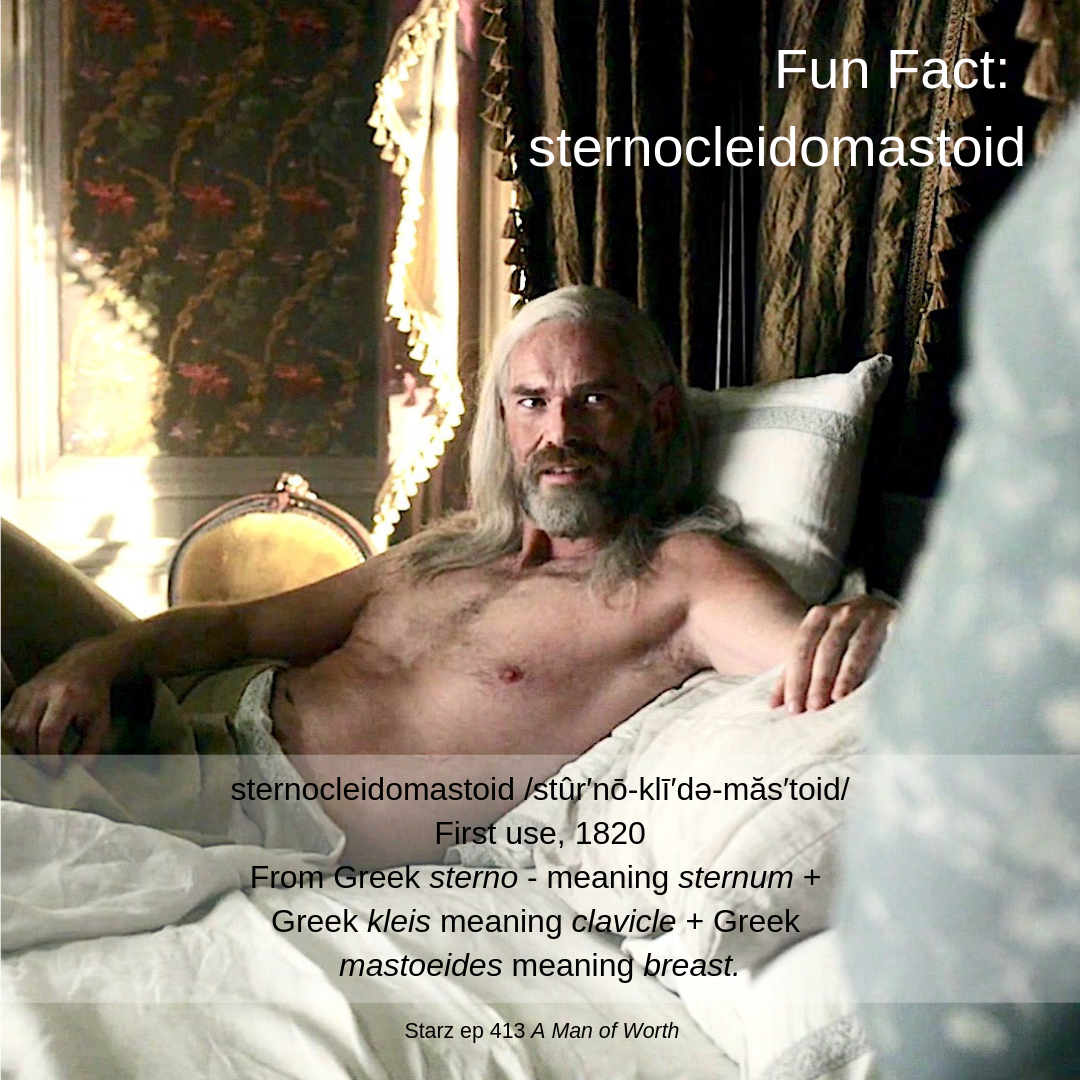
Anatomy def: Palpebra is the scientific name for the eyelid.
Outlander def: Delicate flaps of skin droop over each orb as Claire’s gaze rests upon her beloved.
Learn about eyelids in Anatomy Lesson #29, The Eyes Have It! – Part One”
Fun Facts:
- We reflexively blink our eyes about 15 times each minute.
- Eyelid skin is the thinnest of the body second only to parts of the external genitalia.
Palpebrae (pl.) are upper and lower eyelids overlying each eyeball (oculus). Upper lid is largest of the two. We can voluntarily close upper and lower eyelids and voluntarily open the upper lid. Lower lid opens by gravity or by action of a wee muscle (inferior tarsal) which we cannot control, voluntarily.
Palpebrae perform many crucial functions for the oculus:
- Reflexively close to protect cornea from debris, trauma or excessive light.
- Eyelashes ward off dust particles and perspiration.
- Spread tear film across ocular surface.
- Tarsal glands produce meibum that retards evaporation of tear film.
- Sebaceous glands produce sebum (oil) to waterproof and soften eyelid skin.
- Sweat glands produce sweat to cool the eyelids and eliminate wastes.
Each palpebra contains a flexible connective tissue (tarsal) plate. Tarsal plates allow eyelids to cup the surface of each oculus.
Try this: Grip an upper palpebra between thumb and index fingers – gently squeeze and release. Repeat. Feel the rubbery superior tarsal plate pop between your fingers? Now repeat with the lower lid and note that the inferior tarsal plate is much smaller than the superior version.
Read about the Jamie’s eyelids as he contemplates the future site of Fraser’s Ridge in Drums of Autumn:
Jamie leaned his back against a sycamore, eyelids half lowered against the dazzle of afternoon sun. The little clearing held light like a cup, still and limpid.
“What d’ye think of this place, Sassenach?” he asked.
“I think it’s beautiful. Don’t you?”
See Claire’s upper eyelids lower as she sits near the future Fraser’s Ridge in Starz ep. 401, America the Beautiful. This lass is verra content! <G>


